You are viewing ARCHIVED content published online before January 20, 2025. Please note that this content is NOT UPDATED, and links may not work. Additionally, any previously issued diversity, equity, inclusion or gender-related guidance on this webpage should be considered rescinded. For current information, visit https://www.blm.gov/blog.
National Preparedness Levels: What it Means to be at PL 5
As wildfire activity increases across the nation every year, the national preparedness level (PL) increases. The external affairs staff at the National Interagency Fire Center (NIFC) often get questions about those increases and what it means to reach PL 5 nationally which has happened only four times in July in the last two decades.
The NIFC website offers a great explanation of preparedness levels along with a summary of the nation’s response stages, PL highlights, and monthly averages. Preparedness levels range from the lowest (1) to the highest (5) and each one includes specific management actions that involves increasing levels of interagency resource commitments. So, what happens when we get to PL 5?
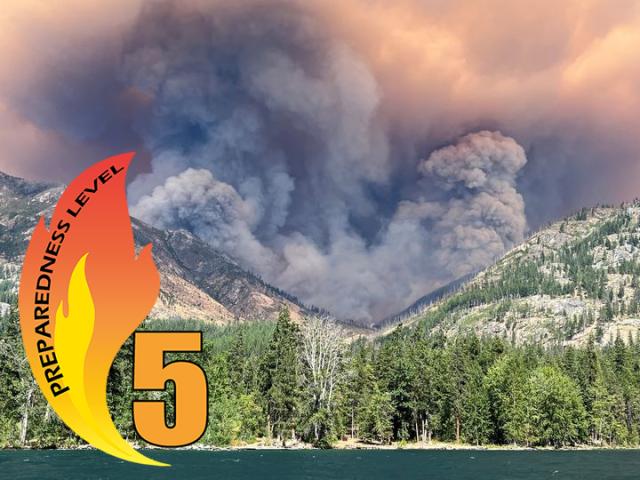
“Prior to raising the national PL to 5 on July 18 this year, we were seeing significant wildland fire activity occurring in multiple geographic areas with a high potential for additional large wildland fires to emerge,” said Brad Sawyer, BLM Fire Branch Chief, Preparedness and Suppression Operations, and National Multi-Agency Coordinating Group (NMAC) member. “Our national resources were becoming heavily committed, and the National Interagency Coordination Center (NICC), who is coordinating national resource requests with Geographic Area Coordination Centers, was receiving hundreds of requests for various types of firefighting equipment and personnel.”
When geographic areas become increasingly active, they are intensively engaged in prioritization of incidents and reallocation of resources as needed to ensure effective incident operations. They are also below draw-down levels for multiple resource types – meaning there are no additional resources to make available for national response.
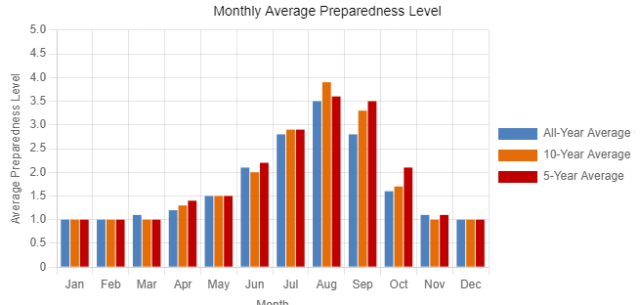
Preparedness levels help us gage resource availability and are based on criteria established in the National Interagency Standard for Resource Mobilization. As preparedness levels rise, so does the need for incident management teams and suppression resources such as wildland fire crews, engines, dozers, support personnel, helicopters, airtankers, tactical aircraft, and other specialized equipment and personnel. The competition for resources increases as fire severity and frequency increases.
The main reason we move up or down in preparedness levels is wildfire activity, fuel and weather conditions and fire suppression resource availability across the country - the number of incident management teams and personnel assigned to incidents along with the competition for resources. National PLs are established by NMAC throughout the calendar year to ensure suppression resources are availability for emerging wildfire incidents or other all-hazard type incidents such as hurricane or flood response.
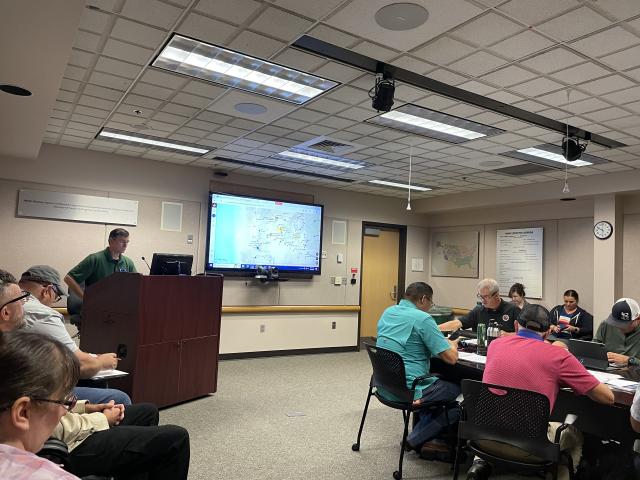
When we are at PL 5 nationally for an extended period, available fire resources are stretched thin. August 2024 has found us in such a position – the need for additional fire personnel including specialized overhead leadership positions and hand crews. In times like these, NICC works with NMAC to coordinate international and military deployments. On August 7, 71 fire personnel from Australia and New Zealand arrived at NIFC to support wildfires in the Northwest. On August 17, a half battalion (264 active-duty and command staff) of military personnel from Joint Base Lewis-McChord mobilized to support the Boulder Fire burning on the Boise National Forest in Idaho. They are being accompanied by the Mark Twain National Forest Veteran Crew and the BLM Nevada Vegas Valley Veteran Crew.
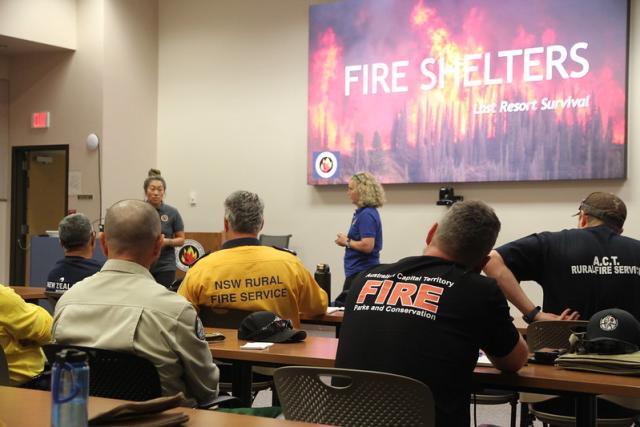
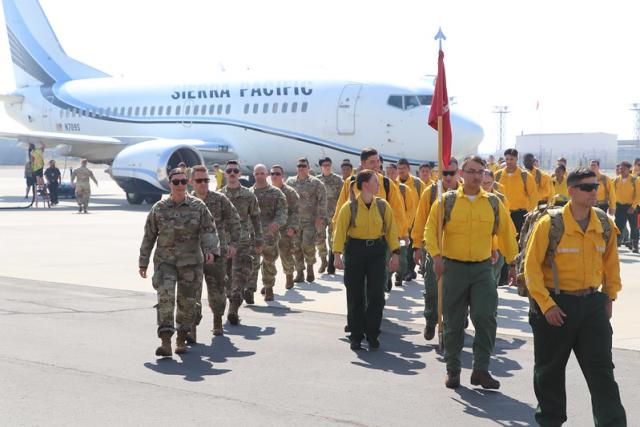
In response to frequent international mobilizations, the International Mobilization Guide was developed in 2024. This guide establishes the standards for international mobilization and demobilization of resources responding to foreign incidents in Canada, Australia, and New Zealand; and foreign resources from Canada, Mexico, Australia and New Zealand in response to wildland fires located in the United States. The bilateral agreements between those countries and the guide are the foundational documents instituting overarching processes for total mobility of resources.
When PLs change, the information will be posted on NIFC and BLM Fire's social media platforms as well as National Fire News (NFN) on the NIFC website. The national preparedness level decreased to PL 4 on August 22, 2024. You can check NFN for PL changes and other national wildfire news updates: https://www.nifc.gov/fire-information/nfn
Links:
To find out what actions are taken at each preparedness level, read the National Fire Preparedness Plan in the National Interagency Standard for Resource Mobilization guide.
To learn more about preparedness levels and what happens at each level, check out the PL section on the NIFC website.
The International Mobilization Guide can be found on the NICC website.
Carrie Bilbao, Public Affairs Specialist, BLM Fire
Related Stories
- BLM Fire Team brings Smokey Bear to Kingman’s Street of Lights
- Rural wildland firefighting partners grateful for BLM gift
- BLM hosts fire investigation training course to strengthen wildland fire investigation capacity across Arizona and the West
- Helping Woodlands & Fighting Fire with the Dawson Project
- BLM delivers on administration priorities
